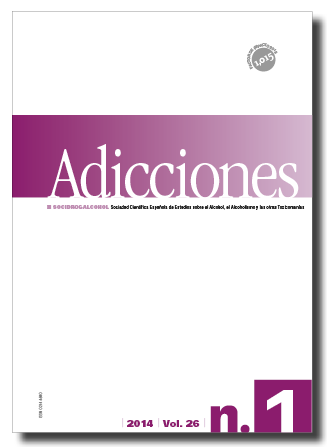“Form ever follows function. This is the law”. A prevention taxonomy based on a functional typology
DOI:
https://doi.org/10.20882/adicciones.123Keywords:
prevention, theory, taxonomy.Abstract
The universal, selective and indicated forms of prevention classification scheme has been recommended and largely adopted as an improvement on previous notions of primary and secondary prevention. However, there is no consensus or clarity about the placing of environmental, community-based or mass media preventive interventions within this scheme. It is suggested that a new dimension of functional types of prevention, namely environmental, developmental and informational prevention should be specified alongside the forms of prevention in a taxonomy matrix, and that this is an improvement on the current one-dimensional universal, selective and indicated scheme. Moreover, it is argued that a re-appraisal of mainstream prevention theories leads to a prediction of the relative effectiveness of these functional types of prevention. This prediction specifies that environmental prevention is generally more effective than developmental prevention which, in turn, is generally more effective than informational prevention.References
Allebeck, P. (2008). The prevention paradox or the inequality paradox. European Journal of Public Health, 18, 215. doi: 10.1093/eurpub/ckn048.
Clark, A. (2013). Whatever next? Predictive brains, situated agents, and the future of cognitive science. Behavioural and Brain Sciences, 36, 181-253. doi: 10.1017/S0140525X12000477.
Commission on Chronic Illness (1957). Chronic illness in the United States, vol. 1. , Cambridge, MA: Published for the Commonwealth Fund by Harvard University Press.
Dennett, D. C. (2013). Expecting ourselves to expect: The Bayesian brain as a projector [Commentary]. Behavioural and Brain Sciences, 36, 209-210. doi: 10.1017/S0140525X12002208
Foxcroft, D. R. (2014). Can prevention classification be improved by considering the function of prevention? Prevention Science. Advance publication online. doi: 10.1007/s11121-013-0435-1
Frolich, K. L. & Potvin, L. (2008). The inequality paradox: the population approach and vulnerable populations. American Journal of Public Health, 98, 216-21.
Gibson, J. J. (1979). The Ecological Approach to Visual Perception. Hillsdale, NJ: Lawrence Erlbaum Associates.
Gordon, R. S. (1983). An operational classification of disease prevention. Public Health Reports, 98, 107-109.
Institute of Medicine (1994). Reducing the risks for mental disorders: Frontiers for preventive intervention research. Washington, DC: National Academy Press.
Marsh, K. L., Johnston, L., Richardson, M. J., & Schmidt, R. C. (2009). Toward a radically embodied, embedded social psychology. European Journal of Social Psychology, 39, 1217-1225. doi: 10.1002/ejsp.666
National Research Council and Institute of Medicine (2009). Preventing Mental, Emotional, and Behavioral Disorders Among Young People: Progress and Possibilities. Washington, DC: The National Academies Press.
Rose, G. (1981). Strategy of prevention: lessons from cardiovascular disease. British Medical Journal, 282, 1847-51.
Marmot ,M., Atkinson, T., Bell, J., Black, C., Broadfoot, P., Cumberlege,J.,… Mulgan, G. (2010). Fair society, healthy lives. Strategic review of health inequalities in England post 2010. London, England: The Marmot Review [available from www.ucl.ac.uk/marmotreview; date accessed 14th January 2013]
Sniehotta, F. F., Presseau, J., & Araújo-Soares, V. (2014). Time to Retire the Theory of Planned Behaviour. Health Psychology Revie. Advance publication online. doi: 10.1080/17437199.2013.869710
Sullivan, L. (1896). The Tall Office Building Artistically Considered. Lippincott’s Magazine (March 1896), 403-409. Retrieved at https://archive.org/details/tallofficebuildi00sull








